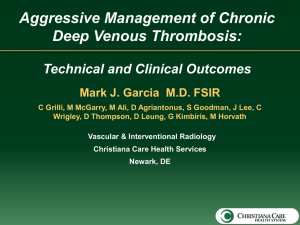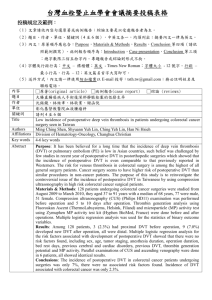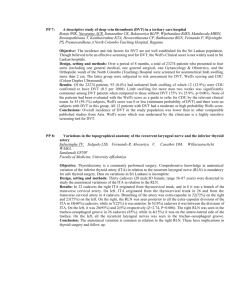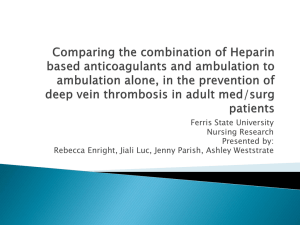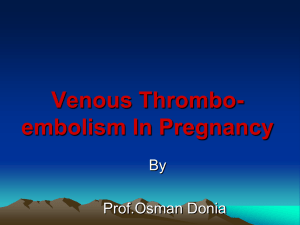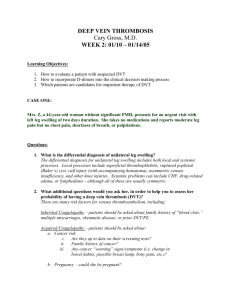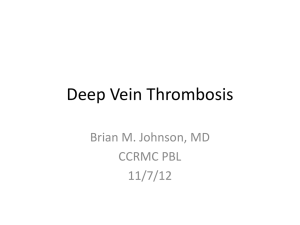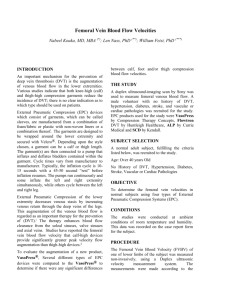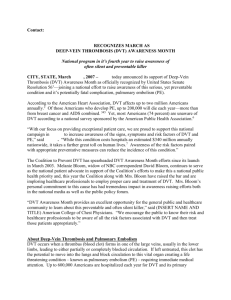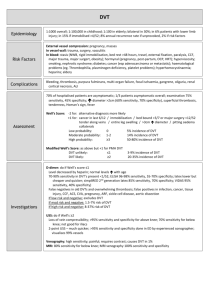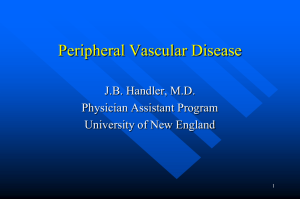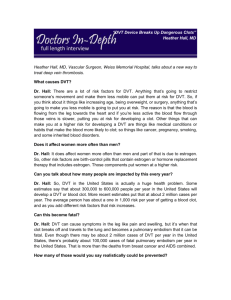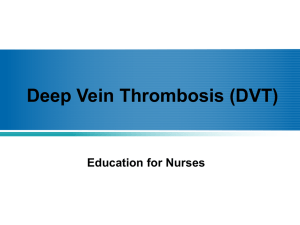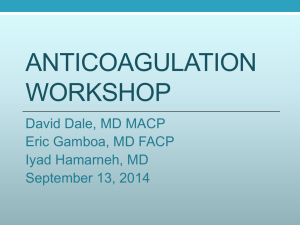Deep Vein Thrombosis
advertisement
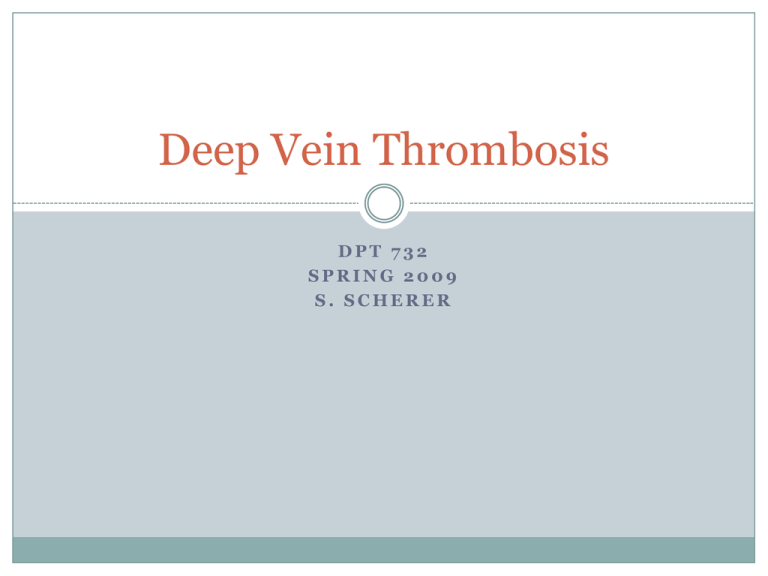
Deep Vein Thrombosis DPT 732 SPRING 2009 S. SCHERER Objectives Discuss etiology of DVT Identify signs & symptoms of DVT Discuss diagnostic criteria for DVT Identify ambulation criteria for patients with acute DVT What is a DVT? Blood clot in a deep vein Occurs due to: Decreased blood flow rate Damage to vessel wall Hypercoagulability Complications of DVT Pulmonary Embolus Signs/symptoms Shortness of breath Rapid pulse Sweating Sharp chest pain Diagnostic Criteria for DVT Active Cancer Recent immobilization Recently bedridden > 3 days or major surgery within 4 weeks Localized tenderness Entire leg swelling Calf swelling > 3 cm Pitting edema Wells, et al 1997 Application of Clinical Decision Rule Moderate probability Score of 1-2 Low Pretest Probability Score of 0 or less Ddimer negative High Probability Score of 3 or more Ultrasound Ultrasound positive negative positive positive Ultrasound NO DVT negative NO DVT positive DVT DVT DVT Case Study 41 y.o. female had ACL reconstruction 7 days ago No post operative anticoagulation therapy Past 2 days sitting in chair or in bed Past 2 days had discomfort in calf and swelling (4 cm greater than other leg) No history of DVT Score of 1 1 point bedrest, 1 point calf swelling, 1 point tenderness - 2 points for alternate diagnosis (post-op swelling) Treatment of DVT Low molecular Weight Heparin or warfarin Elastic compression stockings Pneumatic compression devices When can the Patient Ambulate? Start therapeutic doses of anticoagulation walk as soon and as much as possible with good compression therapy Leads to better outcomes decreased pain decreased swelling decreased occurrence/severity of postthrombotic syndrome (Partsch, 2001). Other questions Early ambulation does not increase the incidence of PE in patients with DVT Bed rest does not decrease incidence of PE Bed rest increases size of DVT How much walking? RCT of 45 patients treated with dalteparin, 200 IU/kg per body weight Group 1- rigid bandages 50 mmHg pressure Group 2 thigh high compression stockings (35 mmHg) Group 3 no compression Walked between 600-12,000 meters/day After 9 days Leg swelling and pain decreased in compression groups (p < .01) QOL improved in compression groups No increased incidence of PE Conclusion Early ambulation is not associated with an increased risk for pulmonary embolism in anticoagulated patients with acute deep vein thromboses. Ensure patients are anticoagulated Apply compression Encourage walking after 8 hours anticoagulation References Partsch, 2000, 2001


